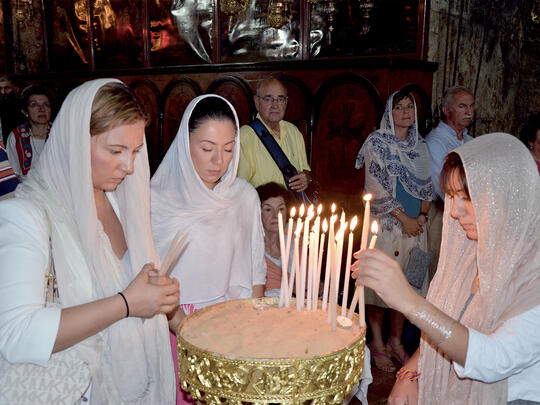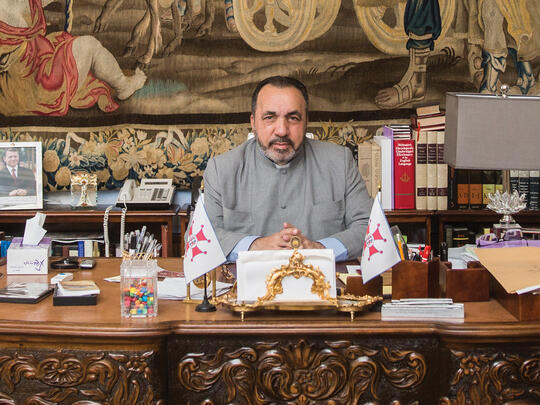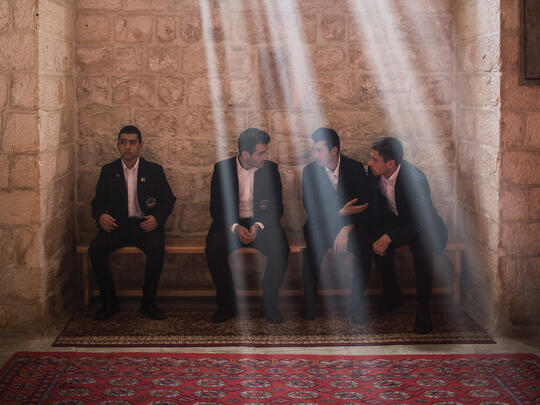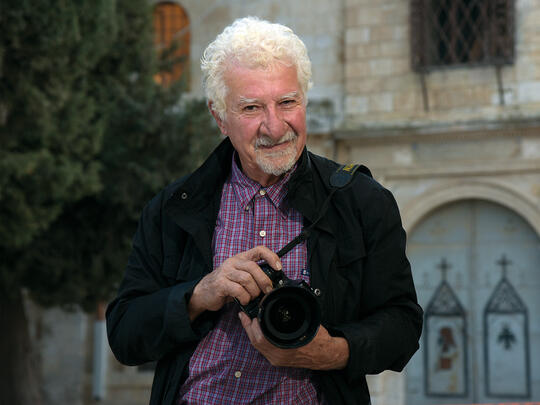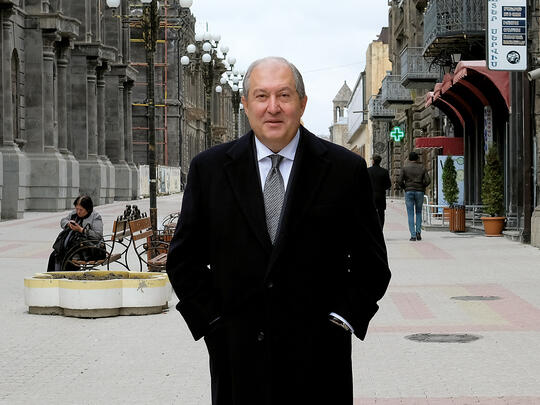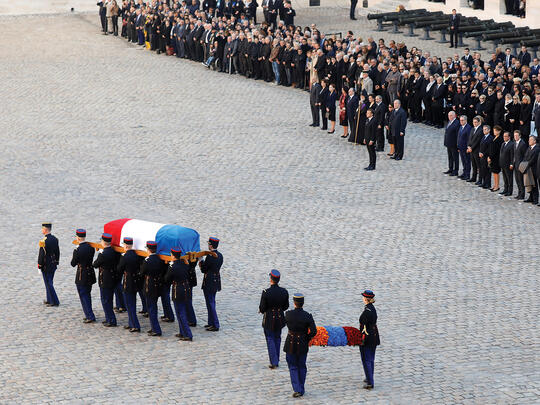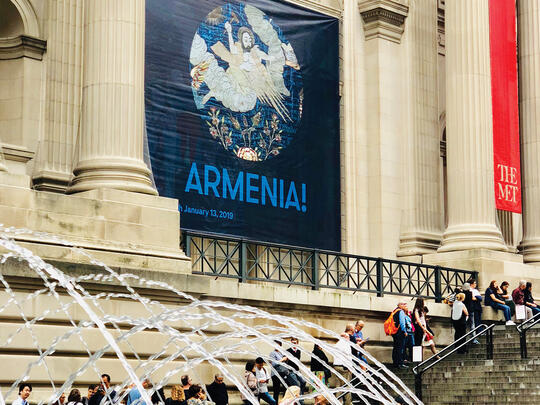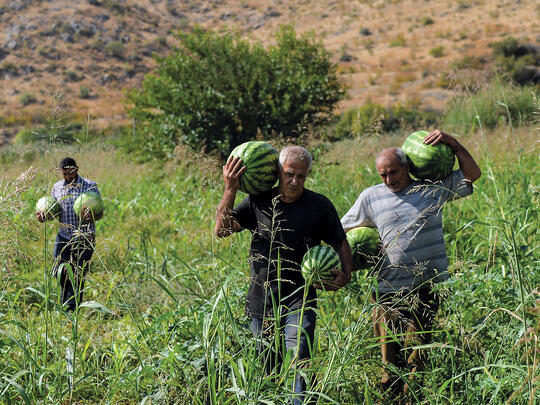Wherever you wander in the ancient streets of the Old City of Jerusalem you will come across exquisite street signs made of gleaming tiles. The blue on white signs, embedded in the walls, are in Hebrew, Arabic and English. The rectangular signs have green leaf trim. The signs are the work of the Karakashian family—the legendary co-founders of the city’s ceramics industry.
While the ceramic arts have been around for thousands of years, the industry is only a century-old in the Holy City. In 1918, the British, who had occupied Jerusalem the previous year, were looking for ceramic artists to repair the decaying 16th century tiles of the Dome of the Rock—the third-holiest shrine of Islam. Then serendipity dropped into the quest: a friend of Jerusalem’s military governor bumped into master potter David Ohannessian in Aleppo. Ohannessian, a denizen of the ceramics centre of Kutahya, north of Istanbul, was a survivor of the Armenian Genocide. The British authorities offered Ohannessian the contract to repair the Dome of the Rock tiles. He returned to Kutahya and hired ten Armenian ceramists and potters, including master painter Megerditch Karakashian and master potter Nshan Balian. For a variety of reasons (financial and political), the Ohannessian commission never took off. Instead, he opened a ceramics store in Jerusalem which operated until 1948. The Karakashians and the Balians formed a partnership and established Palestine Pottery. The partnership lasted until the mid-‘60s when the offspring of the two pioneers went their separate ways but without rancor. The Karakashian brothers founded a workshop on Via Dolorosa, the path that Christ walked on while carrying the cross. (They’ve split since: Berj runs the Via Dolorosa store while Hagop owns Jerusalem Pottery in the Christian Quarter.) The Balians have remained at their original location on Nablus Road. The business is run by Nshan Balian, the grandson of pioneer Nshan Balian.

While most of the “raw” ceramics and pottery are imported, Nshan Balian says his establishment is the only Jerusalem studio which produces its own ceramics and tiles “by methods handed down to us by our grandfather and parents.” Nshan has studied mechanical engineering and ceramics engineering at Ohio University and a college in that state. An additional feather to the Balian cap is the achievements of his mother, Marie, who was a famous tile artist and had her work exhibited at The Smithsonian, in Alicante, Spain, and in Israel. Balian tile murals also decorate the lobby of Qatar’s University Research Center.

Jerusalem souvenir store shelves are awash with Armenian ceramics. The Armenian ceramics are staple retail inventory, given their popularity among tourists. But the fact is 90 percent of the “Armenian ceramics” are not Armenian. They’re mostly made in Hebron—a town south of Jerusalem—by manufacturers who copy Armenian designs using screen, laser, and UV-printing to scan the image to the computer and then on the ceramics. The low-quality, mass-produced wares are lower priced than the hand-made Armenian creations. Because they’re machine produced, their colors are dull, their lines not sharp, and they endlessly repeat the designs created by the Armenians. Lepejian says the imitations are “monotone block colors, sometimes not matching at all.” They also fade when they’re exposed to sunshine for long periods. To purchase the real thing, the discerning tourist has to head to the Armenian studio-workshops. “Tourists come to the Armenian Quarter especially for the ceramics, and usually the guide explains the difference between the fake and the original Armenian work. The Armenians don’t sell their creations in other stores. We sell our products only in our studios.”
In the ‘70s and the ‘80s new blood was pumped into the Armenian ceramics industry when two young men entered the business. Vic Lepejian, who had an M.A. in fine arts from a university in Armenia, opened his workshop (Vic’s Armenian Art Studio) in 1975 on the Armenian Patriarchate Road. His designs were inspired by Armenian illuminated manuscripts, Armenian ornamental arts plus the traditional Kutahya images. In time, he diversified his work by doing portraits and ‘tapestries’ in ceramics. Lepejian has exhibited his work in Australia, England, Israel, Italy, Mexico, Spain, and the United States. His son, Bedros, and Irene Oerdegian, who each have twenty years of experience, work with him.

Self-taught Hagop Antreassian entered the business in 1980, investing two years to trial and error. While Armenian ceramic artists had been inspired by the designs in illuminated manuscripts, his inspiration came from childhood memories of visiting Armenian churches with his father. He said he often adds his creative imprint to the illuminated manuscript motifs. Located across Zion Gate, his Armenian Pottery workshop-cum-studio displays ceramics which glow with cobalt blue, deep greens, and turquoise fauna and flora. One of the pleasures of visiting Antreassian’s Armenian Pottery is watching him design and paint what will become part of his one-of-a-kind inventory. Antreassian also takes pains to explain what he does and how he does it.
In the early ‘80s three brothers (Garo, George, and Harout Sandrouni) joined the industry and now run their own establishments. The last person to join the industry was Arman Darian from Armenia. Since the Armenian artists go to the same source—illuminated manuscripts—for inspiration, they all feature birds and flora in wonderful compositions and in a variety of colors with blue dominating. Their creations also feature geometric designs.
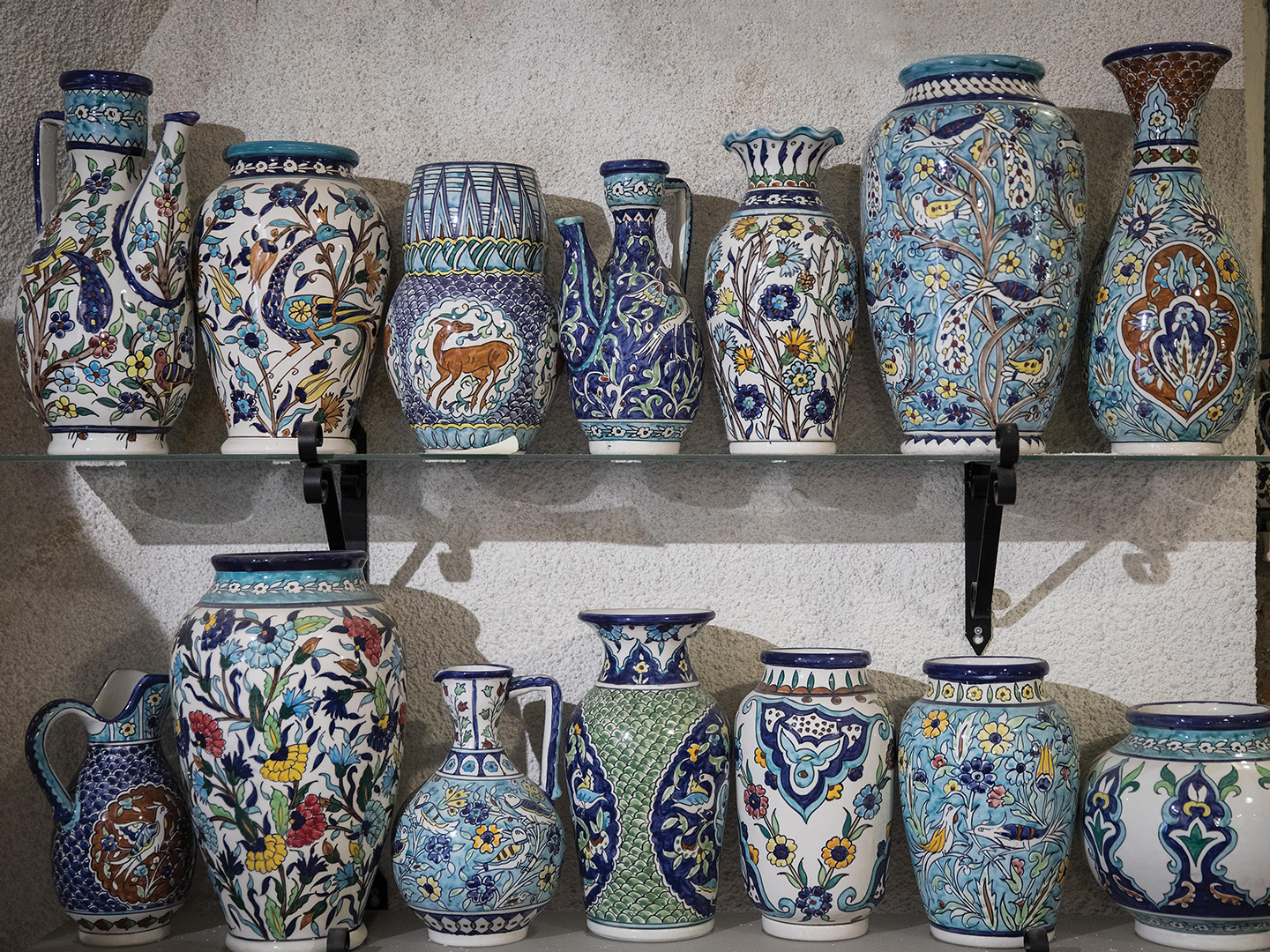
The Sandrouni brothers, from the Gaza Strip, moved to Jerusalem in 1967. Garo was a painter who in 1983 decided to enter the ceramics business and after two years of research and testing, opened his store (Armenian Ceramics Gallery), near the entrance to the Armenian Convent. Like the other Armenian ceramic artists, he and his wife, Sonia, design and paint ornaments, dishes, tiles, trays, vases, bowls, and hanging pieces. And like their Armenian colleagues, their inventory is 100 percent their own work. Forty percent of their creations are shipped to customers overseas. Their work has been exhibited in Israel, Jordan, and France. Garo has written a book in Armenian and in English about the Armenian community. He is busy now translating it to Russian for Russian-Armenian tourists. Garo’s brother, Harout, has a studio-gallery (Armenian Art Centre) facing the entrance to the Armenian Convent while another brother owns the George and Dorin Sandrouni Ceramic Centre near New Gate. George and Dorin design, draw, paint, glaze and fire their products.
Some Armenian artists are annoyed by the copiers, but George Sandrouni doesn’t mind. Their wall-to-wall presence has been beneficial to the promotion of Armenian ceramics, he says.
The Armenian ceramists have secure robust websites with access to online shopping. Customers can view and order pottery, tiles and other decorative ceramics for overseas shipping.
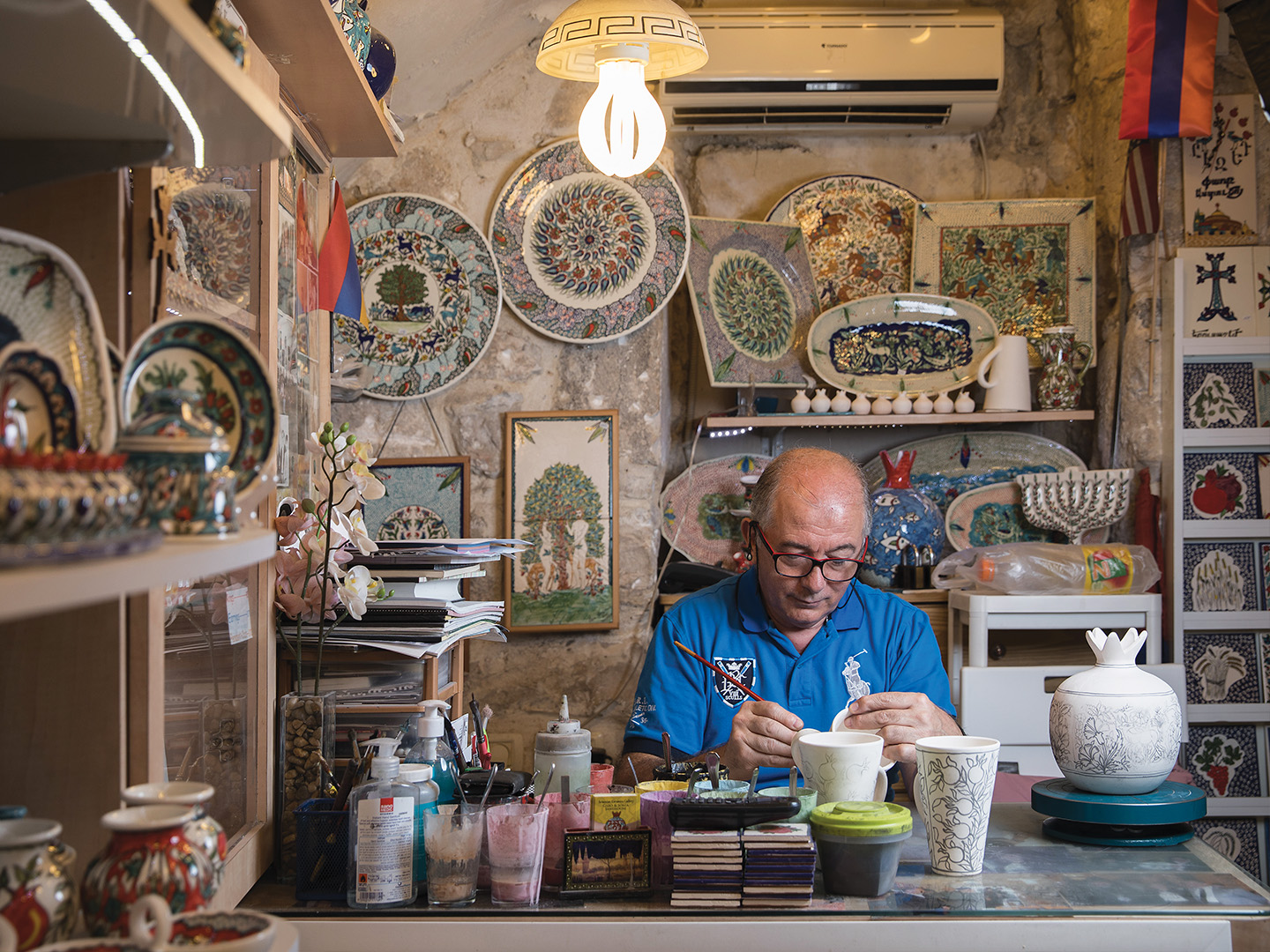
What’s the future of the Jerusalem Armenian ceramics industry? Will the next generation continue the legacy? Lepejian, who is in his late sixties, has no plans to retire. He says, “When I retire, my son Bedros and Ms. Oerdegian will continue.” Setrag Balian Jr., a fourth-generation Balian, is studying economics and management in Armenia. Two years ago, he was in Spain studying ceramics. He says, “My brother and I hope one day to take over the factory and continue the century-old family tradition…we hope to learn all the secrets of the trade.” Antreassian, who has run his one-man operation since day one, says that his oldest daughter is interested in the business and would support her father by upgrading the marketing and branding of the workshop. Newcomers Berj Gejegoushian and his sons, who own several flourishing souvenir stores near Zion Gate, are taking steps to launch their own brand of ceramics. Lepejian says, “I hope we will find a way and continue. It’s a mission.”
Banner photo by Hadas Parush/FLASH90



